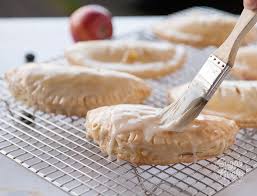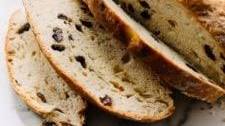The Art of Tapping: Exploring the World of Tap Dance
Tap dance, with its rhythmic beats and percussive sounds, has been captivating audiences for generations. This unique form of dance combines intricate footwork with musicality, creating a mesmerizing performance that is both visually and audibly stunning.
Originating in African American and Irish American communities in the United States in the early 19th century, tap dance has evolved into a popular art form that continues to thrive today. Dancers use metal plates attached to the soles of their shoes to create rhythmic patterns and sounds by striking the floor.
Tap dancers are not only skilled performers but also musicians in their own right, using their feet as instruments to create complex rhythms and melodies. The syncopated beats and swift movements require precision, coordination, and a deep understanding of musical timing.
From classic tap routines performed by legends like Fred Astaire and Ginger Rogers to modern interpretations seen on stages around the world, tap dance has a rich history and a vibrant present. It has influenced other dance styles and continues to inspire new generations of dancers.
Whether you’re tapping along to a Broadway show tune or witnessing a masterful tap solo in a jazz club, the art of tap dance is sure to leave you spellbound. So next time you hear the familiar click-clack of tap shoes on stage, take a moment to appreciate the skill, passion, and creativity that go into creating this timeless form of expression.
9 Essential Tips for Efficient and Sustainable Tap Use
- Turn off the tap when not in use to save water.
- Fix any leaks in the tap promptly to avoid water wastage.
- Use a low-flow aerator on your tap to conserve water.
- Regularly clean your tap to prevent mineral buildup and blockages.
- Avoid using hot water from the tap for drinking or cooking, as it can contain more impurities.
- Teach children to turn off taps tightly after use to prevent dripping.
- Consider installing a motion-sensor faucet for added convenience and water savings.
- In cold weather, protect outdoor taps from freezing by insulating them or draining excess water.
- If you’re experiencing low water pressure from a tap, check for clogs or consult a plumber if needed.
Turn off the tap when not in use to save water.
Turning off the tap when not in use is a simple yet effective way to conserve water. By being mindful of our water usage habits, such as shutting off the tap while brushing teeth or washing dishes, we can make a significant impact on reducing water waste. Every drop saved contributes to the preservation of this precious resource for future generations and helps promote sustainable practices in our daily lives.
Fix any leaks in the tap promptly to avoid water wastage.
It is essential to address any leaks in the tap promptly to prevent water wastage. Even a small, seemingly insignificant leak can result in a significant amount of water being wasted over time. By fixing leaks as soon as they are noticed, not only can you conserve water resources and reduce your utility bills, but you also contribute to environmental sustainability by minimizing unnecessary water usage. Regular maintenance and timely repairs ensure that your tap functions efficiently, promoting responsible water management practices in your household or establishment.
Use a low-flow aerator on your tap to conserve water.
By using a low-flow aerator on your tap, you can effectively conserve water without compromising on functionality. This simple yet effective tip helps reduce water usage by controlling the flow rate while maintaining adequate pressure for daily tasks. Installing a low-flow aerator not only saves water but also lowers utility bills and promotes environmental sustainability. Making this small adjustment to your tap can have a significant impact on water conservation efforts, making it a practical and eco-friendly choice for everyday use.
Regularly clean your tap to prevent mineral buildup and blockages.
Regular maintenance of your tap is crucial to ensure optimal performance and longevity. By regularly cleaning your tap to prevent mineral buildup and blockages, you can avoid potential issues such as reduced water flow or even complete blockages. Mineral deposits can accumulate over time, affecting the functionality of your tap and potentially leading to costly repairs. By incorporating simple cleaning routines into your household maintenance, you can keep your tap running smoothly and efficiently, ensuring a steady flow of clean water whenever you need it.
Avoid using hot water from the tap for drinking or cooking, as it can contain more impurities.
It is advisable to refrain from using hot water from the tap for drinking or cooking, as it may contain a higher concentration of impurities. Hot water can leach contaminants from the plumbing system, such as lead or other harmful substances, which can pose health risks when consumed. To ensure the safety of your drinking water and cooked meals, it is recommended to use cold water for consumption purposes and heat it separately if needed. By being mindful of this precaution, you can protect yourself and your loved ones from potential health hazards associated with hot tap water.
Teach children to turn off taps tightly after use to prevent dripping.
Teaching children the importance of turning off taps tightly after use is a simple yet crucial tip to instill good water-saving habits from a young age. By ensuring that taps are fully closed, children not only prevent wasteful dripping but also contribute to conserving water resources for a sustainable future. This small act of responsibility helps promote environmental awareness and encourages mindful behavior in daily routines, showing children the positive impact they can have on the world around them through mindful actions like conserving water.
Consider installing a motion-sensor faucet for added convenience and water savings.
By considering the installation of a motion-sensor faucet, you can enhance both convenience and water efficiency in your daily routine. With a motion-sensor faucet, you can easily activate the flow of water without needing to touch any handles, making it a hygienic choice for busy kitchens and bathrooms. Additionally, the automated shut-off feature helps conserve water by ensuring that the faucet stops running when not in use, promoting eco-friendly practices and reducing water wastage.
In cold weather, protect outdoor taps from freezing by insulating them or draining excess water.
During cold weather, it is essential to safeguard outdoor taps from freezing to prevent damage. One way to do this is by insulating the taps or draining any excess water that may be trapped in the pipes. By taking these simple precautions, you can ensure that your outdoor taps remain functional and undamaged during the chilly winter months.
If you’re experiencing low water pressure from a tap, check for clogs or consult a plumber if needed.
If you’re noticing a decrease in water pressure from a tap, it’s essential to investigate potential causes such as clogs in the faucet aerator or pipes. Simple maintenance tasks like cleaning out debris can often resolve the issue. However, if the problem persists despite your efforts, it may be wise to seek the expertise of a professional plumber who can diagnose and address any underlying issues affecting your water flow. Regular maintenance and prompt attention to water pressure concerns can help ensure efficient functioning of your plumbing system.






